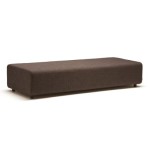How To Wash Sofa Covers: A Comprehensive Guide
Maintaining a clean and inviting living space often hinges on the condition of upholstered furniture. Sofa covers, in particular, bear the brunt of daily life, accumulating dirt, spills, and allergens. Regular cleaning is therefore essential, but the process can seem daunting. This article provides a detailed guide on how to effectively wash sofa covers, ensuring they remain fresh and extend the lifespan of the sofa itself.
The first step in washing sofa covers is to determine their fabric composition. Different materials require different cleaning methods, and using the wrong approach can lead to shrinkage, discoloration, or damage. Common sofa cover fabrics include cotton, linen, polyester, and blends of these materials. Natural fibers like cotton and linen are generally more susceptible to shrinkage than synthetic fibers like polyester. Leather and velvet are generally not machine washable and require specialized cleaning.
Before proceeding, locate the care label attached to the sofa cover. This label contains crucial information regarding washing instructions, including recommended water temperature, detergent types, and drying methods. Adhering to the manufacturer's instructions is paramount to avoid damaging the fabric.
1. Preparation and Assessment
Before washing any sofa cover, perform a thorough visual inspection. Identify any stains, spills, or areas of heavy soiling. Pre-treating these areas can significantly improve the overall cleaning outcome. Common household stain removers can be effective for many types of stains, but always test the product on an inconspicuous area of the cover first to ensure it does not cause discoloration or damage.
Vacuuming the sofa covers is a crucial pre-wash step. This removes loose dirt, dust, pet hair, and other debris that can become embedded in the fabric during the washing process. Use a vacuum cleaner with an upholstery attachment to effectively clean the surface and crevices of the covers. Pay particular attention to areas where dirt tends to accumulate, such as along seams and around cushions.
Remove all cushions and accessories from the sofa frame. Unzip the sofa covers carefully, paying attention to any intricate fastenings or zippers. Document the placement of each cover to simplify the reassembly process after washing. Taking photographs during disassembly can be particularly helpful.
Assess the washing machine's capacity. Overloading the machine can prevent the covers from being properly cleaned and can also damage the washing machine itself. If the sofa covers are bulky, consider washing them in multiple smaller loads or using a commercial-sized washing machine at a laundromat.
2. Washing Procedures
The washing process depends heavily on the fabric type and the instructions on the care label. However, some general guidelines apply to most washable sofa covers. Use a mild laundry detergent specifically designed for delicate fabrics. Avoid using harsh chemicals, bleach, or fabric softeners, as these can damage the fibers or cause discoloration. For colored fabrics, use a detergent formulated to protect colors.
Set the washing machine to a delicate or gentle cycle to minimize agitation and prevent shrinkage. Use cold or lukewarm water, as hot water can damage certain fabrics and cause colors to fade. If the care label specifies a particular water temperature, adhere to those instructions.
For heavily soiled covers, consider using a pre-soak cycle or soaking the covers in a tub of cold water with detergent for 30 minutes to an hour before washing. This can help to loosen dirt and stains, making them easier to remove during the wash cycle.
If hand washing is recommended, fill a large tub or basin with cold or lukewarm water and add a small amount of mild detergent. Submerge the sofa cover in the water and gently agitate it to remove dirt and stains. Avoid excessive rubbing or twisting, as this can damage the fabric. Rinse the cover thoroughly with clean water until all traces of detergent are removed.
After washing, inspect the sofa covers to ensure that all stains and dirt have been removed. If necessary, repeat the washing process or try a targeted stain removal treatment. However, avoid excessive washing, as this can weaken the fabric over time.
3. Drying and Reassembly
The drying method is just as important as the washing method. Incorrect drying can lead to shrinkage, warping, or damage to the fabric. The care label will typically specify whether the sofa covers can be machine dried or should be air-dried.
If machine drying is permitted, use a low heat setting to minimize the risk of shrinkage. Remove the covers from the dryer while they are still slightly damp to prevent them from becoming overly stiff or wrinkled. Smooth out any wrinkles with your hands and allow the covers to air-dry completely.
Air drying is generally the safest option for most sofa covers, especially those made from natural fibers. Hang the covers on a clothesline or drying rack in a well-ventilated area, away from direct sunlight. Direct sunlight can cause colors to fade. Turn the covers inside out to protect the outer fabric from fading and to promote even drying.
Avoid using a clothes dryer if the care label specifically advises against it. High heat can cause irreversible shrinkage and damage to the fabric.
Once the sofa covers are completely dry, reassemble them onto the sofa cushions and frame. Refer to the photographs or notes taken during disassembly to ensure that each cover is placed correctly and that all zippers and fastenings are properly secured. Ensure that the cushions fit snugly inside their covers and that the covers are smooth and wrinkle-free.
If the sofa covers are wrinkled after drying, use a garment steamer or iron on a low heat setting to remove the wrinkles. Always test the steamer or iron on an inconspicuous area of the cover first to ensure that it does not damage the fabric. Avoid using steam or heat on delicate fabrics such as velvet or leather.
After reassembling the sofa, vacuum the covers again to remove any lint or dust that may have accumulated during the process. Arrange the cushions and accessories to create a comfortable and inviting seating area. Use a fabric protector spray to help repel stains and protect the sofa covers from future spills.
In addition to regular washing, consider using a sofa cover protector to shield the fabric from spills, stains, and everyday wear and tear. These protectors are typically made from water-resistant or stain-resistant materials and can be easily removed and washed as needed.
Professional cleaning services offer an alternative to washing sofa covers at home. These services have specialized equipment and expertise to clean a wide range of fabrics and can often achieve better results than home washing methods. If the sofa covers are made from delicate or difficult-to-clean materials, or if you are unsure about the proper cleaning methods, consider hiring a professional cleaning service.
Regular maintenance and preventative measures can help to prolong the life of the sofa covers and reduce the need for frequent washing. Avoid eating or drinking on the sofa to minimize the risk of spills and stains. Encourage family members and guests to use coasters and napkins to protect the fabric.
Periodically rotate the sofa cushions to distribute wear and tear evenly. This can help to prevent certain areas of the covers from becoming excessively worn or faded. Fluff the cushions regularly to maintain their shape and prevent them from becoming flattened or compressed.
Addressing spills and stains promptly is crucial to prevent them from setting into the fabric. Blot spills immediately with a clean, absorbent cloth. Avoid rubbing the stain, as this can spread it and make it more difficult to remove. Use a stain remover specifically designed for the type of stain and follow the manufacturer's instructions carefully.
By following these guidelines, individuals can effectively wash their sofa covers, maintaining a clean and comfortable living space while extending the lifespan of their furniture. The key lies in careful preparation, adherence to care label instructions, and appropriate cleaning and drying methods.

How To Wash Couch Cushions And Covers Lovetoknow

How To Clean Couch Cushions Like The Pros Bis

Diy How To Clean Your Sofa Save Money

How To Clean Couch Covers And Keep Them White Funky Junk Interiors

How To Clean A Fabric Couch And Sofa Pro Housekeepers

How To What Is The Best Way Clean Sofa Upholstery Plumbs

How To Wash Your Couch Cushions Clean Mama

How To Wash Your Couch

How To Clean Sanitize Couch Slipcovers Cushions And Throw Pillows Clorox

Are Sofa Covers Machine Washable Plumbs








